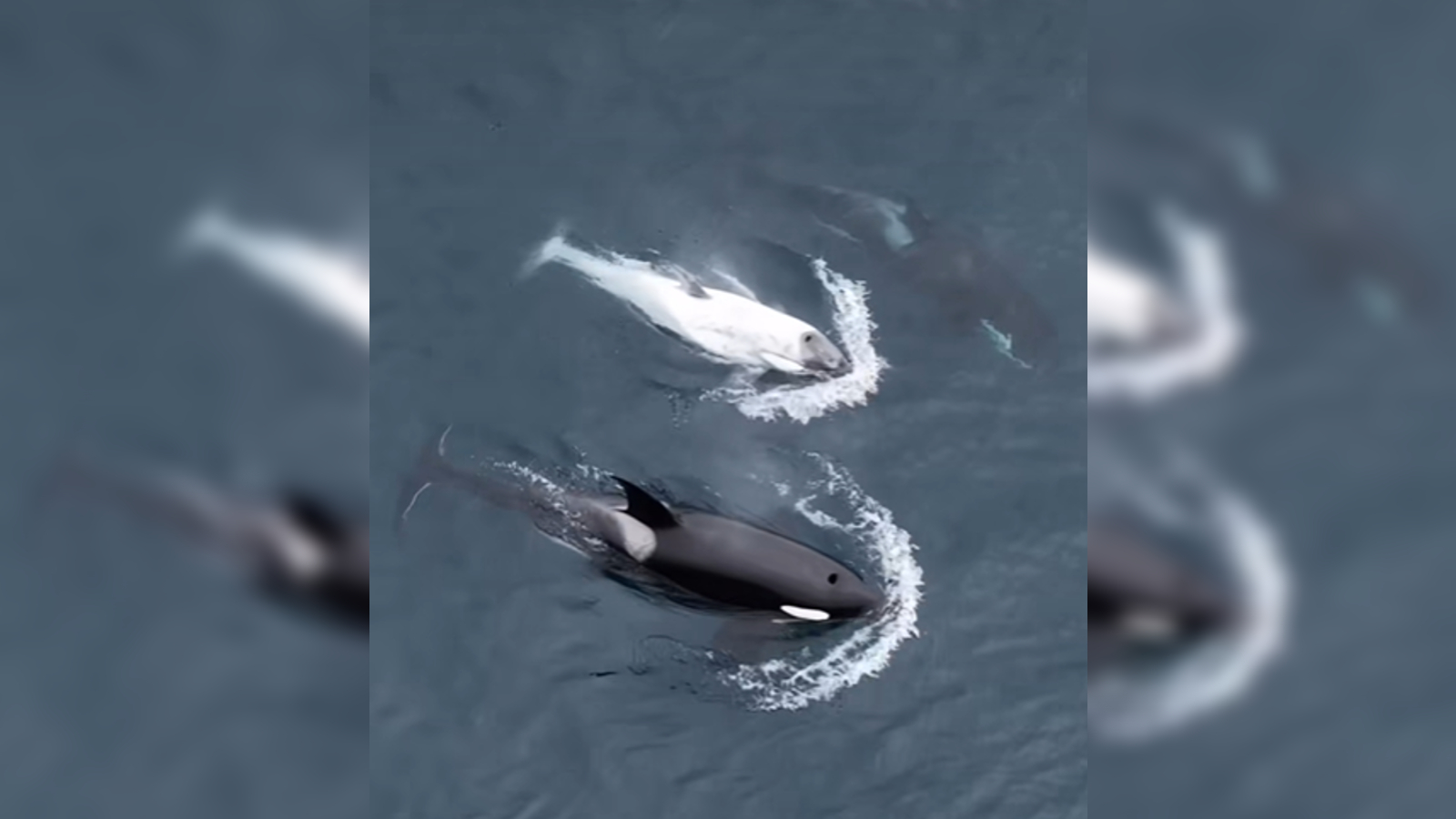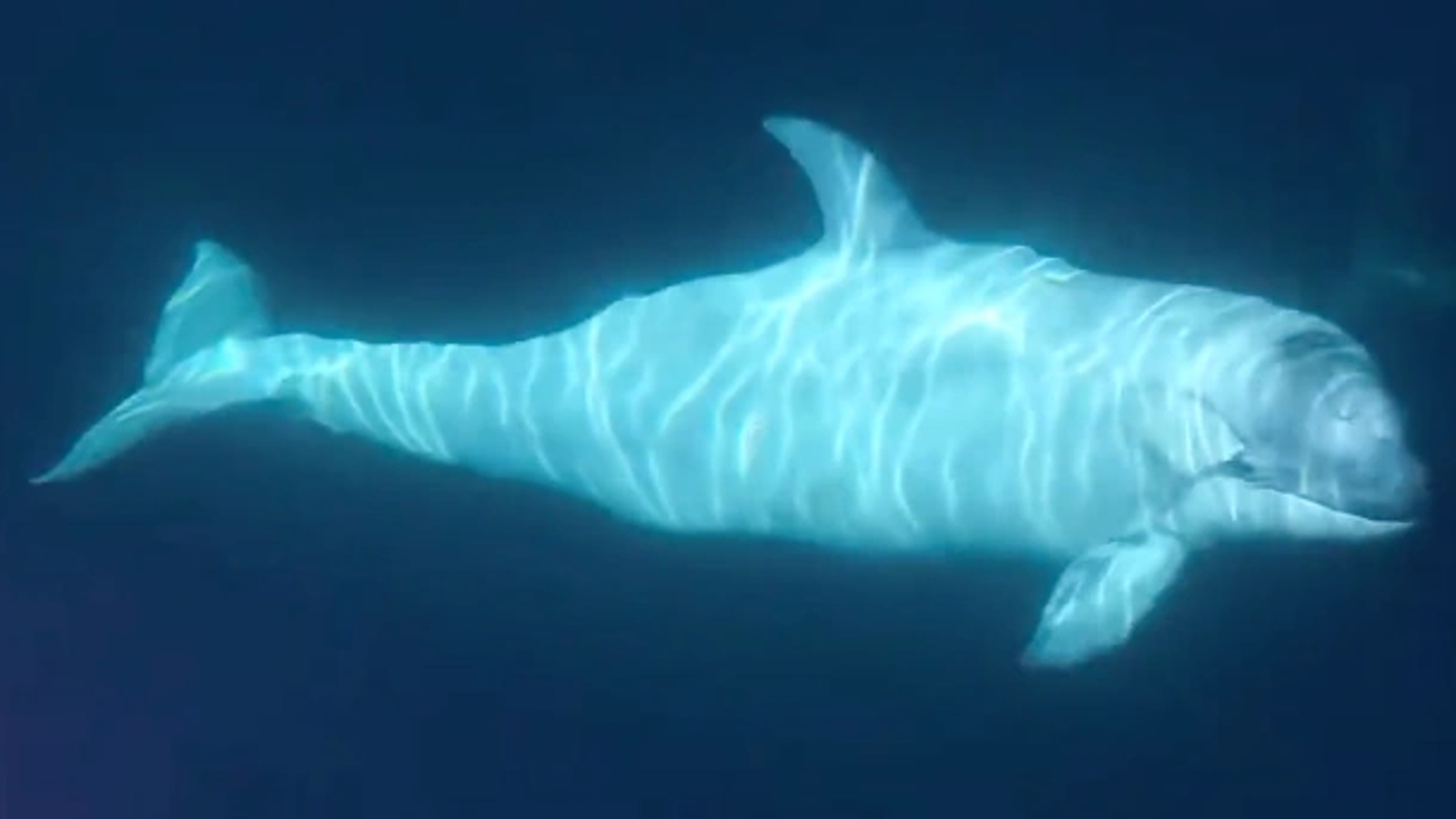
Whale watchers off the coast of California recently witnessed an extremely rare sight — a young white orca (Orcinus orca). The calf, which was almost completely white except for dark patches on its dorsal fin and snout, most likely has a pigment-related condition known as leucism, experts say.
The unusually colored calf, nicknamed "Frosty," is a 3-year-old male that was already known to whale watchers and orca researchers in the area. On April 24, a whale-watching vessel spotted Frosty along with six other orcas around 8 miles (13 kilometers) off the coast of Malibu, according to Newsweek. The vessel then alerted other boats in the area, including a vessel belonging to Newport Coastal Adventure, whose crew filmed Frosty with a drone when they arrived on the scene.
Wildlife photographer Mark Girardeau also captured footage of Frosty and his cetacean companions from on board Newport Coastal Adventure's vessel. The seven orcas belong to a pod known as CA216 — a group of transient, or Bigg's, orcas that have been spotted as far south as the Mexican border and as far north as Canada, Girardeau wrote on Instagram. (Transient orcas are an ecotype, or subspecies, of orcas that have a wide geographical range, while the closely related resident orcas often stay in the same place for their entire lives.)
Related: Orca appears to adopt (or abduct) a baby pilot whale
The rare orca doesn't have albinism because it does have dark patches. Instead, there are two conditions that can give orcas an incomplete white color. One of these is leucism, which is a genetic condition that causes some or all of an animal's cells to stop producing melanin — a pigment that gives an animal's skin, hair, feathers and eyes color. The other condition is Chediak-Higashi syndrome, a very rare, recessive genetic disorder that also affects melanin production.

An orca with Chediak-Higashi syndrome would bruise very easily and be prone to bacterial infections, Erich Hoyt, a researcher at Whale and Dolphin Conservation (WDC) in the U.K. and author of the "Encyclopedia of Whales, Dolphins and Porpoises" (Firefly Books, 2017), told Live Science in an email. As a result, the condition can often be fatal, he added.
But Frosty's white coloration is most likely caused by leucism, because he appears to be in good health, Hoyt said. Other experts agreed with this assessment.
Animals with leucism or albinism are often at an evolutionary disadvantage because they stand out more easily to predators and their skin is more sensitive to sunlight, which can cause sunburns and raise cancer risk, meaning that their survival rates in the wild are poor.
However, Frosty does not have this problem: His aquatic lifestyle protects him from overexposure to sun, and orcas have no real predators, Hoyt told Live Science. As a result, as long as he manages to survive to adulthood, Frosty will likely live a normal life.
This is not the first time white orcas have been spotted by whale watchers. In July 2021, a pair of adult orcas with albinism were spotted swimming alongside one another in Japan. This pair is particularly interesting because it is extremely unlikely to find two white orcas in the same pod. Their unusual color also highlighted the number of rake marks and scratches left on their bodies by play-fighting with other orcas.







